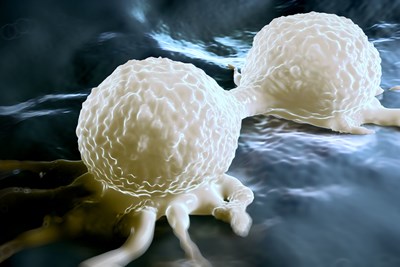Uterine cancer is a rare but serious disorder encompassing several types of cancers that can occur in the uterus. Early treatment gives the best prognosis; since uterine cancer is not generally a cancer regularly screened, it’s important for women to be educated about it. Here is a look at 10 terms to help you get informed about uterine cancer.
- Endometrial Cancer: About 3/4ths of all uterine cancers are endometrial cancer, beginning in the endometrium (the tissue lining of the uterus). About 60,000 women will be diagnosed with it this year in the US. Unusual vaginal bleeding, abnormal vaginal discharge, and pelvic pain can all be indicative of endometrial cancer.
- Adenocarcinomas: Adenocarcinomas are cancerous tumors that originate in cells designed to make bodily fluids, like mucus, called epithelial cells. Epithelial tissue (like the endometrium) lines organs and blood vessels throughout the body. Endometrial cancer is generally an adenocarcinoma, although there are other types of cancers that may form.
- Uterine sarcoma: A less common type of uterine cancer is uterine sarcoma. Rather than forming in the tissue lining, uterine sarcoma cancer forms in the uterus’ other supporting tissues and muscles. Depending on which specific uterine structure the cancer takes over, more specific types of uterine sarcomas will be diagnosed.
- Hereditary Nonpolyposis Colorectal Cancer (HNPCC): Uterine cancer carries a hereditary risk factor—not only can a genetic history of gynecological cancer increase the chances, but familial colorectal cancer is also a risk factor for developing uterine cancer. HNPCC is a gene mutation that can be passed on to offspring. It not only increases the risk of colon cancer, but uterine cancers as well.
- Complex Atypical Endometrial Hyperplasia: This type of hyperplasia causes a thickening of the endometrial lining of the uterus. It may start as simple endometrial hyperplasia, which is less likely to become cancerous. Treatment with hormone therapy may be successful. If left untreated, it can be another dangerous risk factor for uterine cancer. Eventually, however, the disease can progress to become complex and atypical, which becomes cancerous in nearly a third of cases.
- Polycystic Ovarian Syndrome (PCOS): Another gynecological complication that can impact the development of uterine cancer is PCOS. It’s most dangerous characteristic is the hormone imbalance that comes with it. Women with PCOS have higher levels of androgen and estrogen, but lower levels of progesterone. When progesterone levels do not increase along with estrogen, uterine cancer is more likely.
- TMN System: TMN is an acronym for “Tumor,” “Lymph Node,” and “Metastasis.” As with most cancers, uterine cancer appears in different stages. The American Joint Committee on Cancer utilizes the TMN system to establish these different stages during diagnosis, based on the size of the tumor, the presence of cancerous cells in the lymph nodes, and if the cancer has spread to other parts of the body.
- Dilation and Curettage: In order to diagnose uterine cancer, dilation and curettage are sometimes necessary. The patient is put under anesthesia; the cervix is dilated, and then a curettage is performed. Curettage is when a sample of the uterine cells are scraped off to be examined more closely. This is sometimes necessary when a biopsy is insufficient.
- Hysterectomy: Before uterine cancer has spread to other parts of the body, a hysterectomy may be an effective method of treatment. A hysterectomy is the surgical removal of both the uterus and the cervix. In some cases, a radical hysterectomy is necessary to remove the ovaries, upper part of the vagina, and all nearby tissue.
- Ovarian Cortex Cryopreservation: Although uterine cancer is quite rare in women under the age of 45, it can happen. Since in most cases the entire reproductive system must be surgically removed, the chance to have a child is eliminated.Ovarian cortex cryopreservation utilizes techniques that freeze the ovarian tissue so that childbearing may still be an option down the road.



